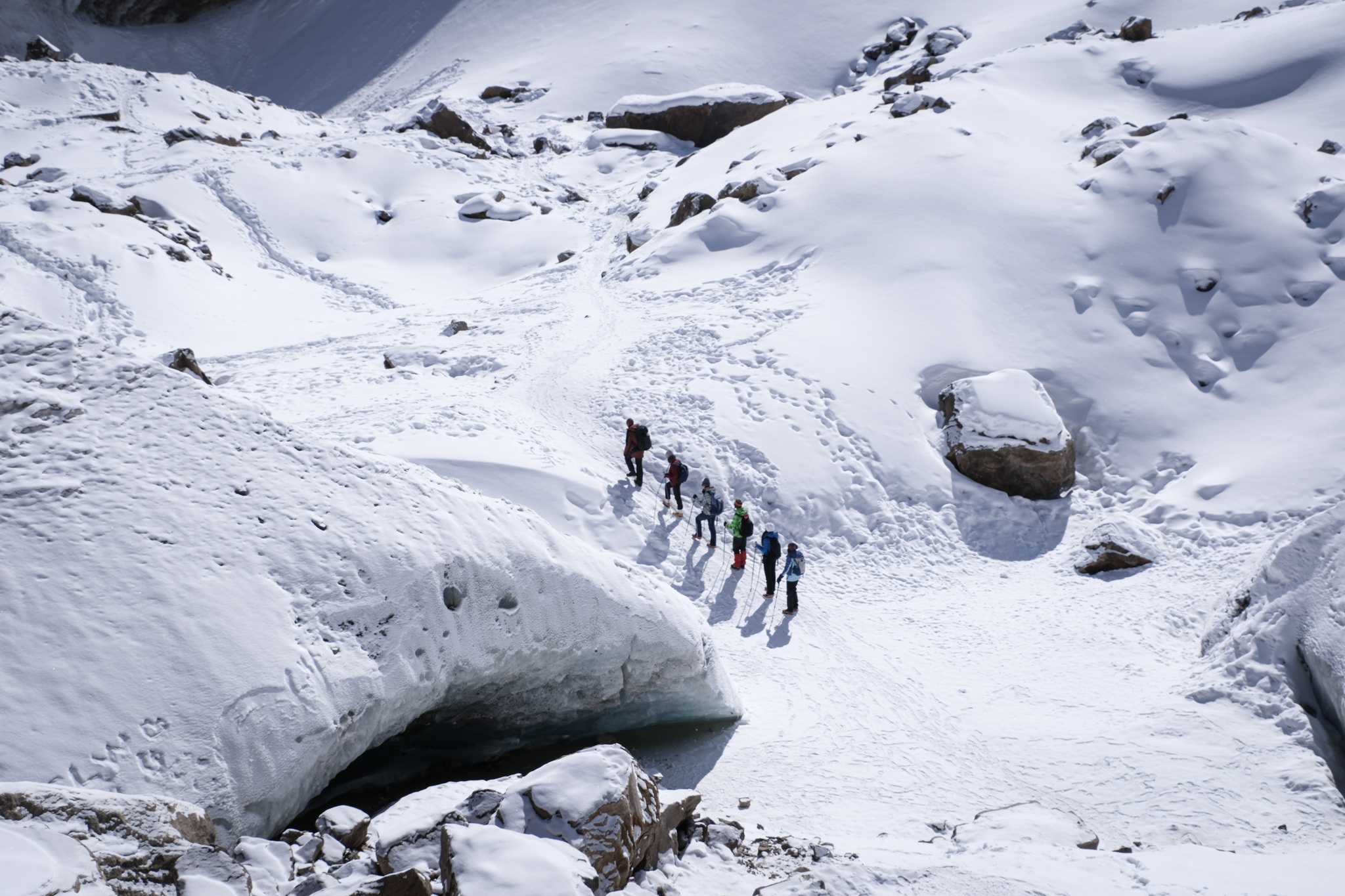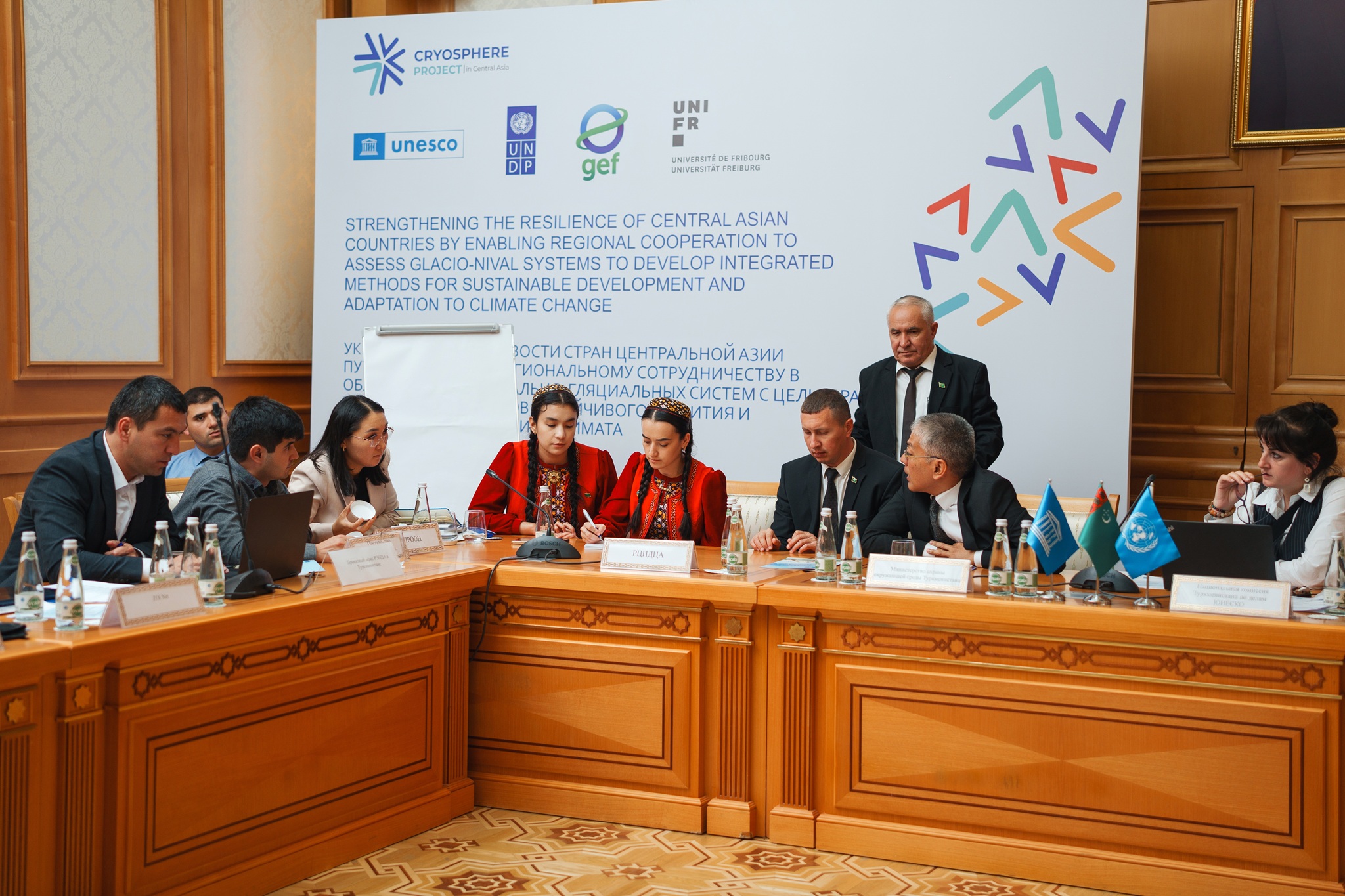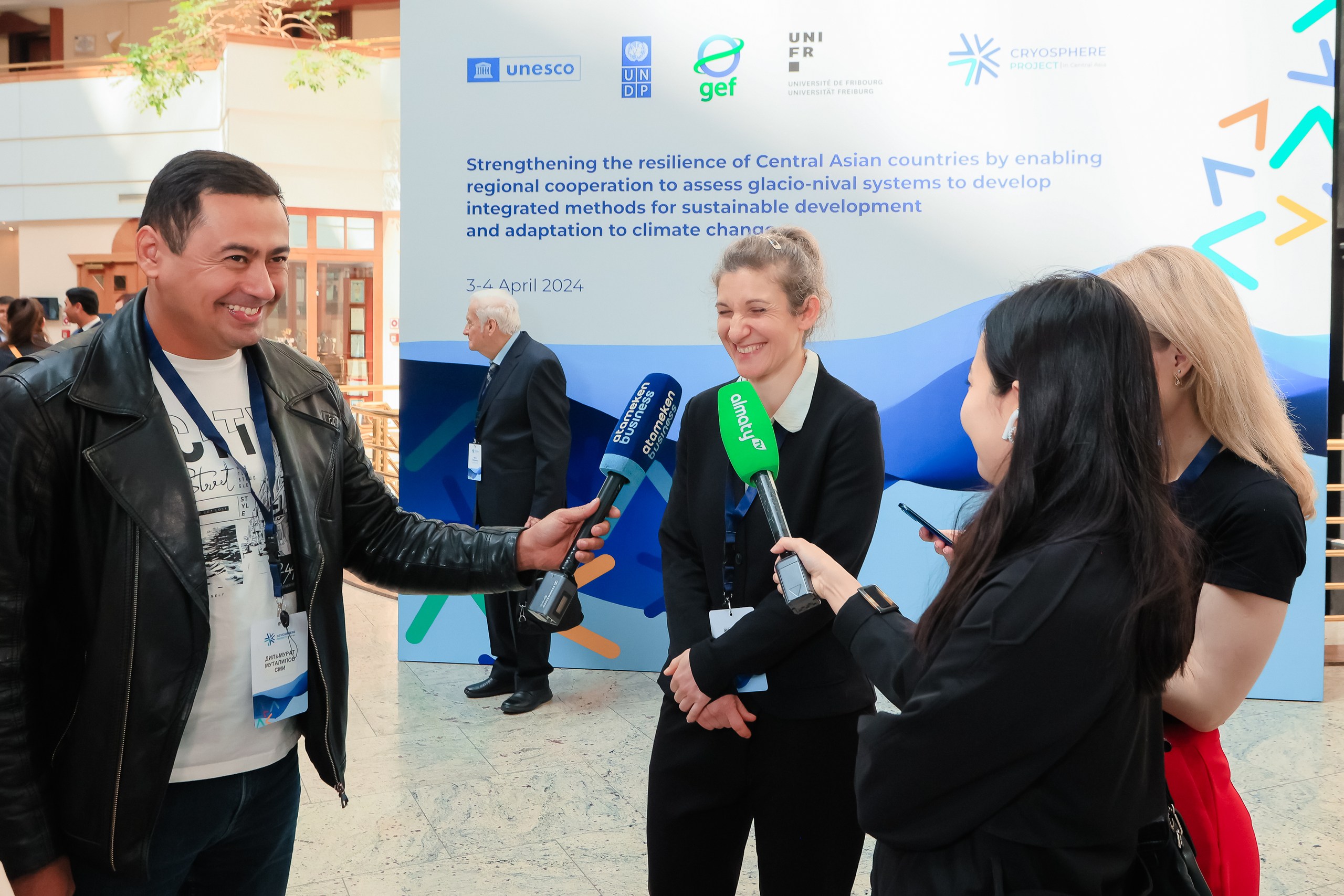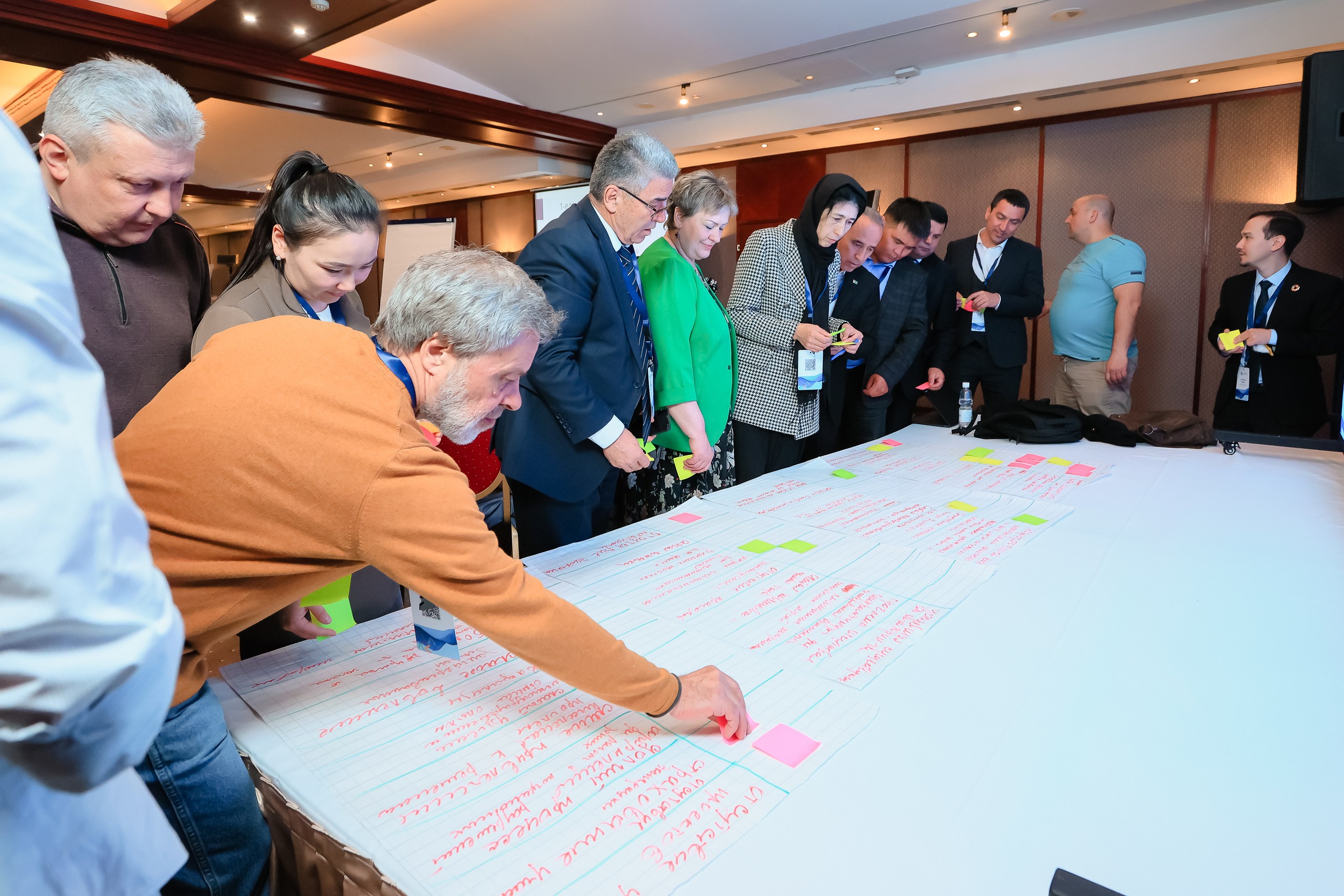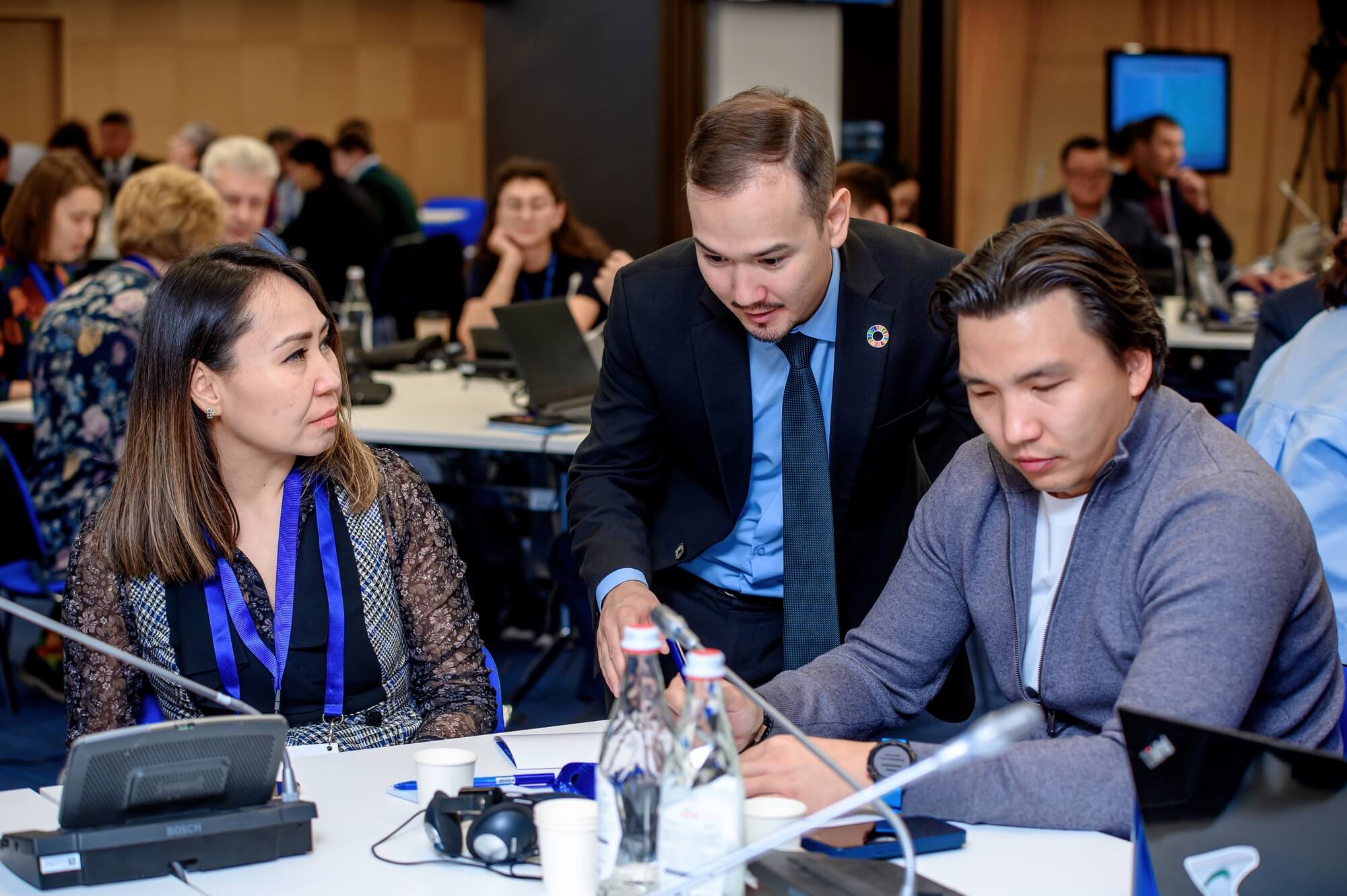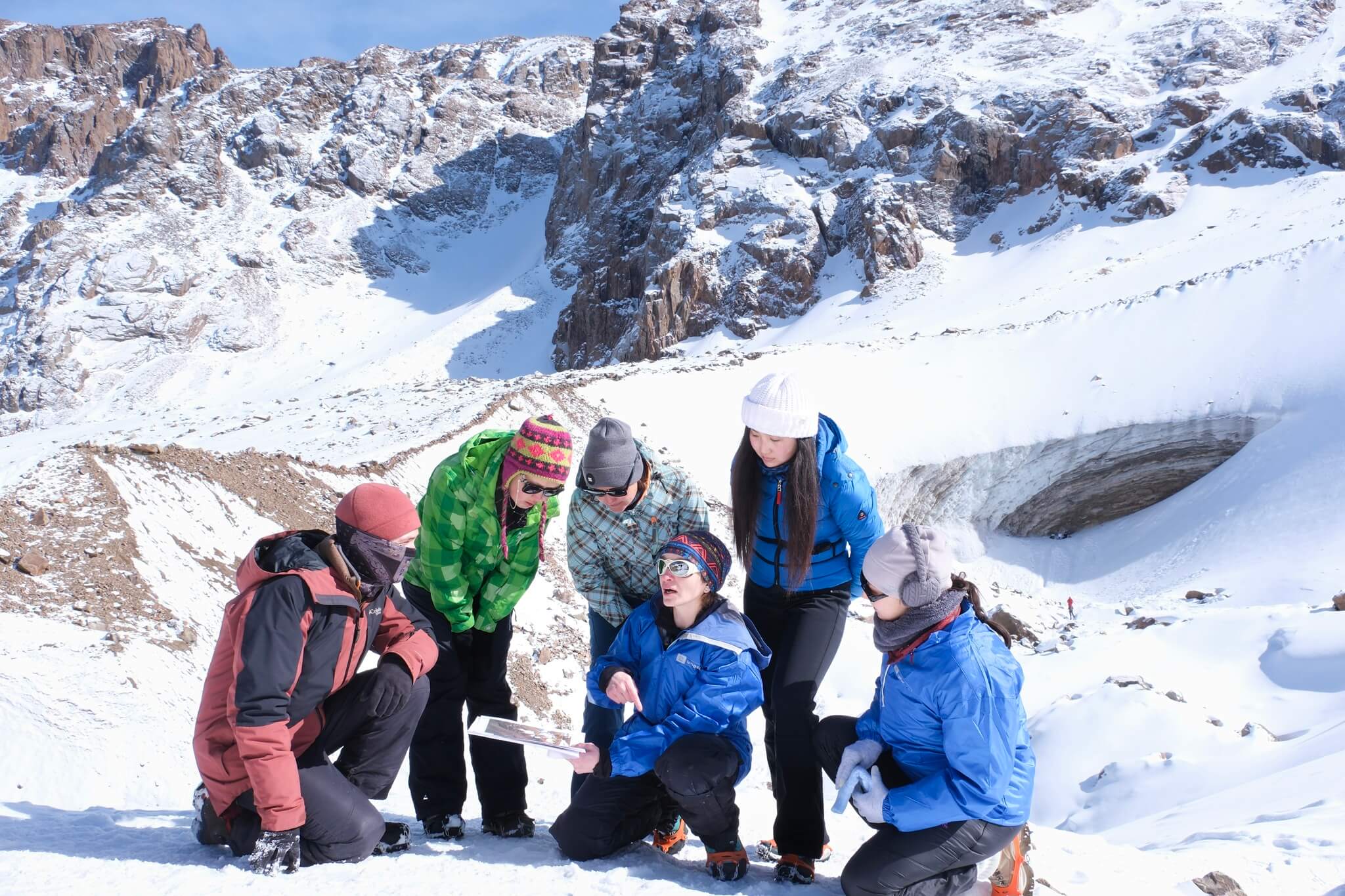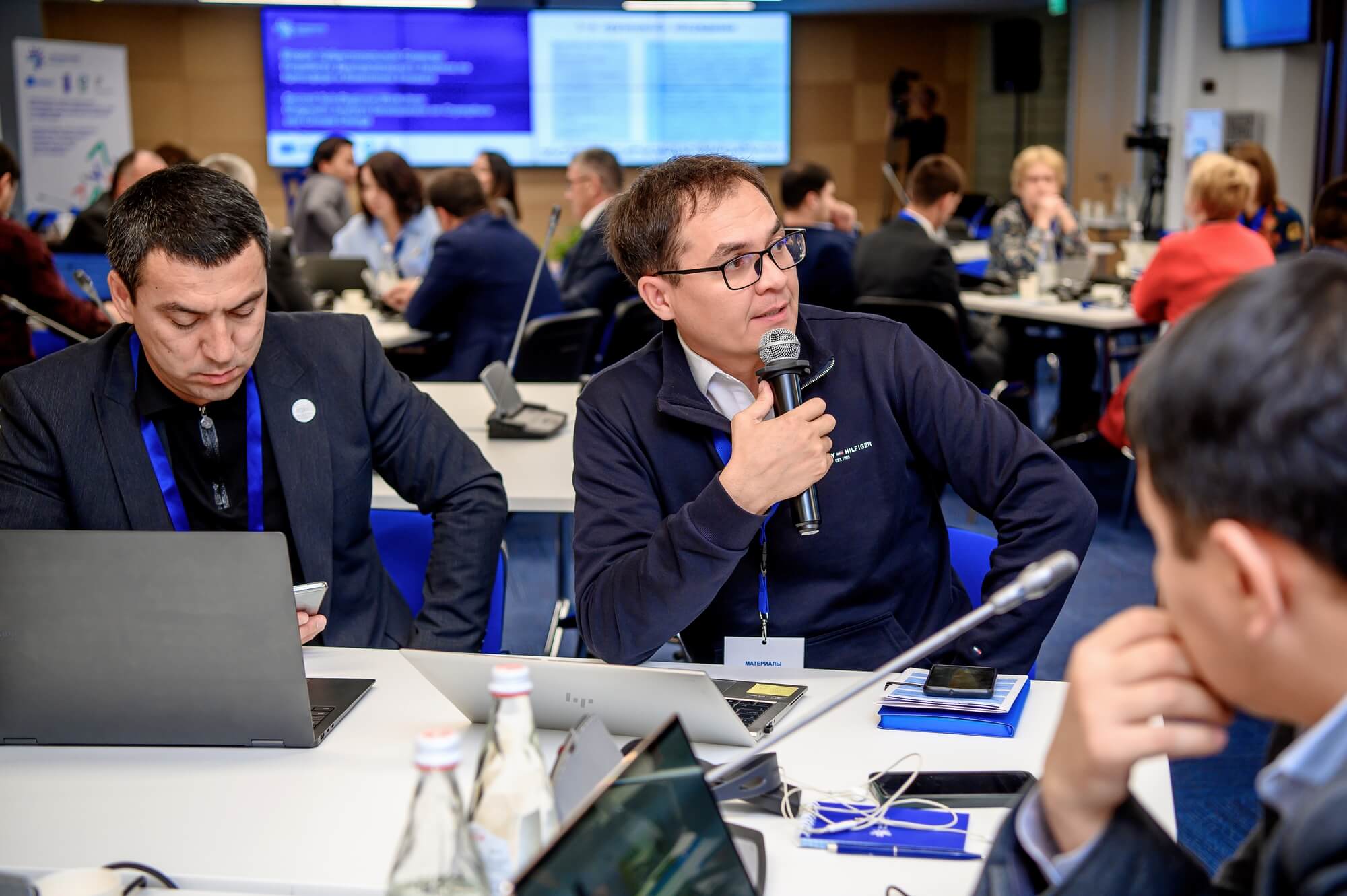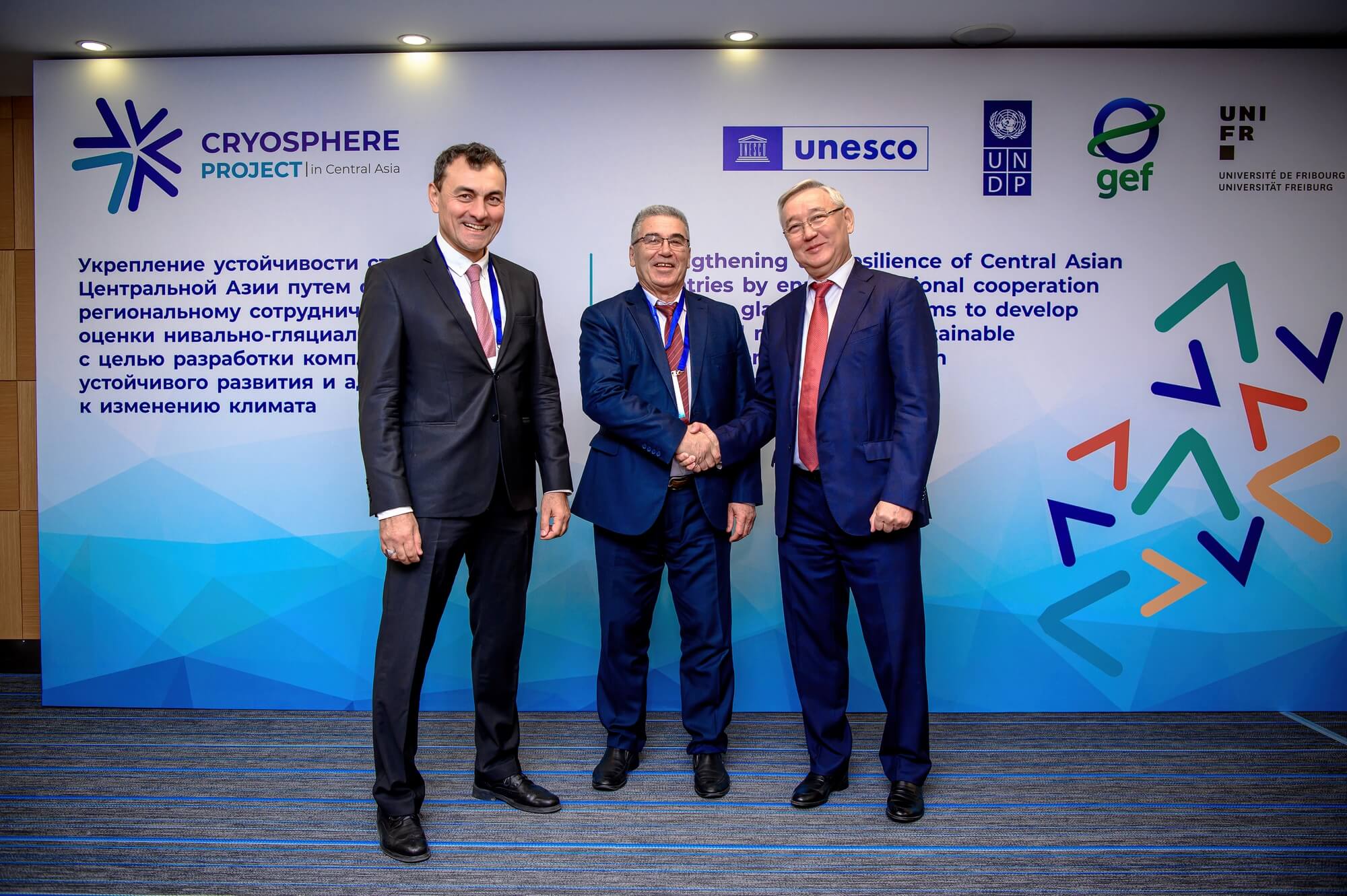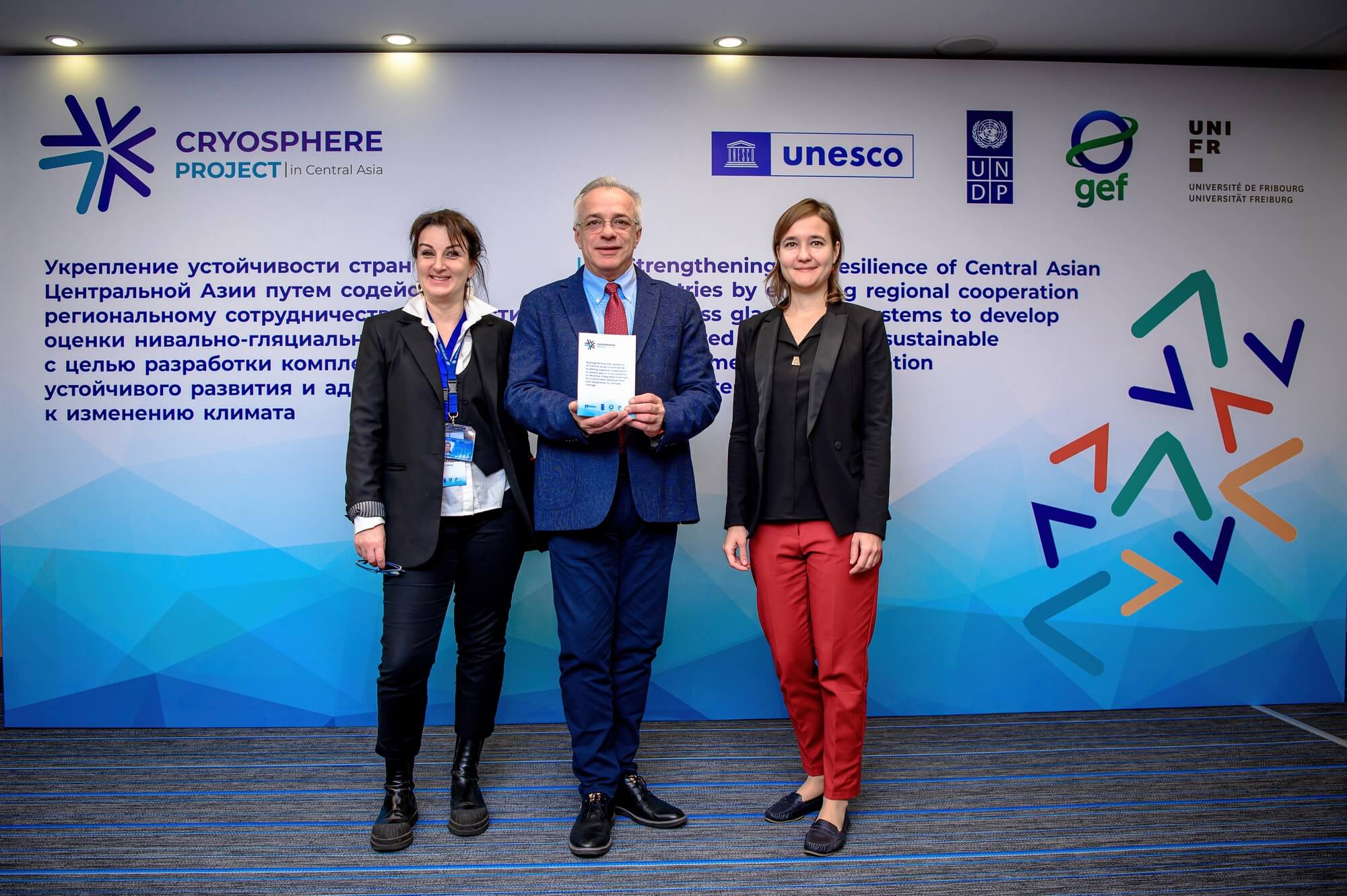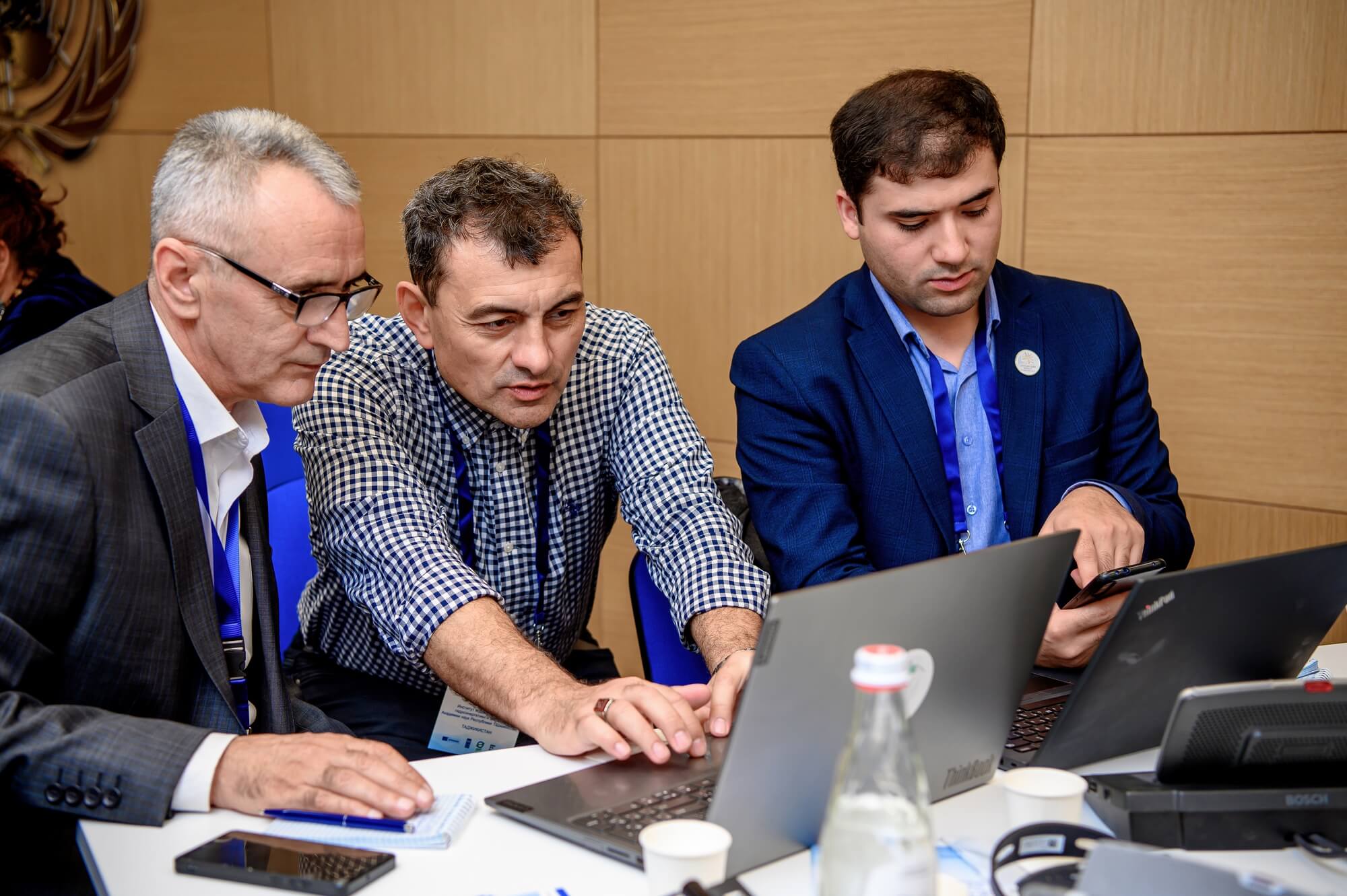Strengthening the Resilience of Central Asian Countries by Enabling Regional Cooperation to Assess Glacio-nival Systems to Develop Integrated Methods for Sustainable Development and Adaptation to Climate Change
GEF–UNDP–UNESCO Cryosphere Project
The project unites five Central Asian countries – Kazakhstan, the Kyrgyz Republic, Tajikistan, Turkmenistan, and Uzbekistan – to jointly develop common approaches to cryosphere monitoring and management, including glaciers, snow cover, and permafrost. It is executed by the UNESCO Regional Office in Almaty, funded by the Global Environment Facility (GEF), and implemented by the United Nations Development Programme (UNDP).
Kazakhstan, Kyrgyzstan, Tajikistan, Turkmenistan, Uzbekistan
national partners: research institutes, ministries, agencies
project budget
key components of the project
Project goal
The project aims to strengthen the resilience of Central Asian countries to the impacts of climate change on the cryosphere through scientific research, enhanced regional cooperation, and stakeholder engagement.
The project incorporates gender considerations into all areas of work. It promotes a gender-sensitive approach, recognising that changes in the cryosphere affect women and men differently, particularly in rural and mountain areas where women play a key role in water resources management, agriculture, and food security. The project ensures equal participation of women and men in developing adaptation plans, conducting monitoring, training, and decision-making.
To achieve this, the project addresses five key tasks:
- Creating a unified cryosphere database – collecting, systematising, and analysing information on glaciers, snow cover, and permafrost, as well as their impact on water resources in the region.
- Developing regional cooperation – preparing National Action Plans (NAPs) and a Strategic Action Programme (SAP) for coordinated actions among countries.
- Strengthening cryosphere monitoring – introducing modern methods for observing glaciers, snow, and permafrost to forecast their changes.
- Pilot adaptation projects – testing new technologies and practices for water resources management in glacier-fed river basins.
- Raising awareness – informing the public and policymakers about the risks of cryosphere change and adaptation measures, including training programmes and publications.
® YouTube
Project activities
The project is based on four thematic reports that provide a comprehensive overview of the state of the cryosphere and its future:
- “The current state of the cryosphere and its impact on water resources in Central Asia”
- “Climate change scenarios for glaciers and the impact of meltwater on water availability in Central Asia”
- “Development of high-resolution scenarios of climate change impact on snow cover in Central Asia”
- “Assessment of needs and gaps in higher education programmes on the cryosphere in Central Asia”
In working with stakeholders, including discussions at national and subregional workshops, the project has identified three main challenges requiring attention:
- Insufficient quality, limited availability, or lack of cryosphere data
- Lack of knowledge about the state of the cryosphere and the impacts of its degradation under climate change
- Shortage of qualified specialists in cryosphere research, monitoring, and management
The project’s recommendations will serve as the basis for national and regional cryosphere management plans, helping Central Asian countries adapt more effectively to climate change.

 Go Back
Go Back